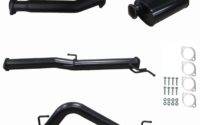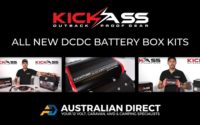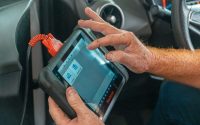How to Choose and Install the Right Brake Pads on Ford Falcon BA
The Ford motor company, as it’s officially known in the auto manufacturing world, is one of the oldest car brands that has been making vehicles for the masses. They have always put a focus on making vehicles that are safe and technology-oriented. It’s not that Ford vehicles are one of the most technologically advanced but they tend to have the latest and if not the second latest technology on board. Ford is also known for making performance vehicles such as their Mustang lineup which has been around for more than 50 years now.
With Ford vehicles, you get a lot to choose from too both when it comes to vehicle models and their trim levels. But with every vehicle, be it old or new, maintenance is something you need to frequently do to keep it running and safe on the road. Speaking of safety, brakes are the main component that a lot of people don’t put enough emphasis on. While there are different types of car brakes, all of them have one common part that needs to be replaced more frequently than all others – brake pads.
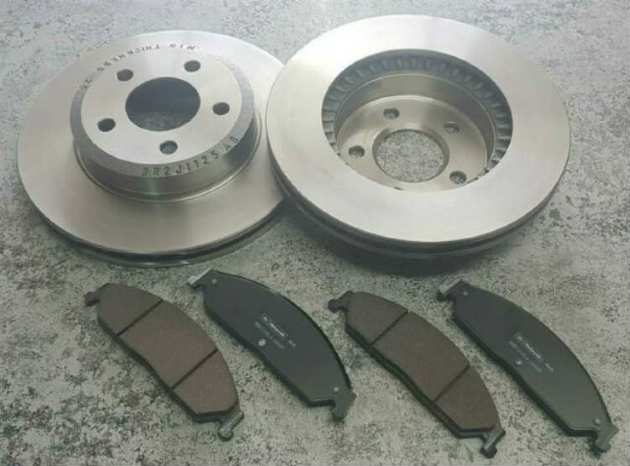
Different Types of Brake Pads Explained
NAO
The most basic brake pads you’ll see used today are NAO (non-asbestos organic) pads. These are one of the most affordable brake pads Ford Falcon BA you can get. They are also the softest and quietest since they have no metal in them. NAO once contained asbestos which was replaced by safer alternatives such as natural resins.
Non-Metallic
Similar to NAO pads, non-metallic pads don’t have any metals in them but instead have rubbers, glasses, and resins too. Non-metallic pads are even softer than NAO pads which is why they are not as recommended by experts. However, they don’t create as much brake dust as NAO pads.
Semi-Metallic
Semi-metallic brake pads are made up of about 30% of metals, such as copper or steel. These BA Falcon brake pads provide a way better braking performance, but this comes at the cost of noise and brake dust. Despite that, semi-metallic pads are the most common on the roads today.
Ceramic
If you want the best of performance and the least amount of noise, as well as brake dust, you should go for ceramic pads. These pads are the most expensive you’ll find, but they will last you a long time without a drop in braking performance.
How to Change Brake Pads on a Ford Falcon
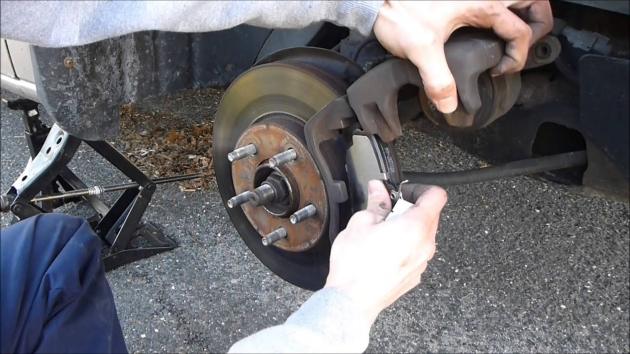
What’s Needed
With your new brake pads BA Falcon secured, installing them should be your next step which will require a set of tools before you start, including a lug wrench, jack and jack stands, a wrench, c-clamp, plastic tie, and mechanic’s gloves.
Removal
1. Before you install your new BA Falcon brake pads you need to remove the old ones. In order to do this, you first need to gain access to them by removing the wheel. Next, you need to remove the lower slider bolt on the calliper.
2. After the removal of the bolt, you need to pivot up the calliper, which will allow you to inspect the pads. With the pads in sight, slide them out together with the retaining clips. Then, replace the retaining clips which often come with new pads.
Installation
1. Once everything is out, take your new pads and slide them in where the old ones were. Remember, some pads will require you to hold the unattached shim during installation while others won’t. There are what are called “ears” on either end of each pad that slides into the slots found in the clips.
2. When you slide the new pads into place they will feel tighter, which is normal since they haven’t been worn out and are thicker than the old ones. With the pads placed properly, you then need to retract the pistons which press on the pads.
3. After that, you’ll need to lower the calliper into place. You’ll need to use a c-clamp in order to keep the pistons back before placing the calliper back where it originally was. After the pistons are pushed back and the calliper is set in place check the brake fluid.
4. The brake fluid should rise slowly. If it looks like the reservoir is going to overflow, you should suck out some of it with a turkey baster. With everything in place and the brake fluid at the desired level, reposition the calliper and reinstall the bolt you removed at the beginning.
5. To ensure that everything is installed correctly and working well together, test-drive your vehicle. Be careful, especially the first few stops you make as your brake pedal will have a higher engagement point with the new pads in place. You’ll get used to doing this, it just takes a couple of tries.

